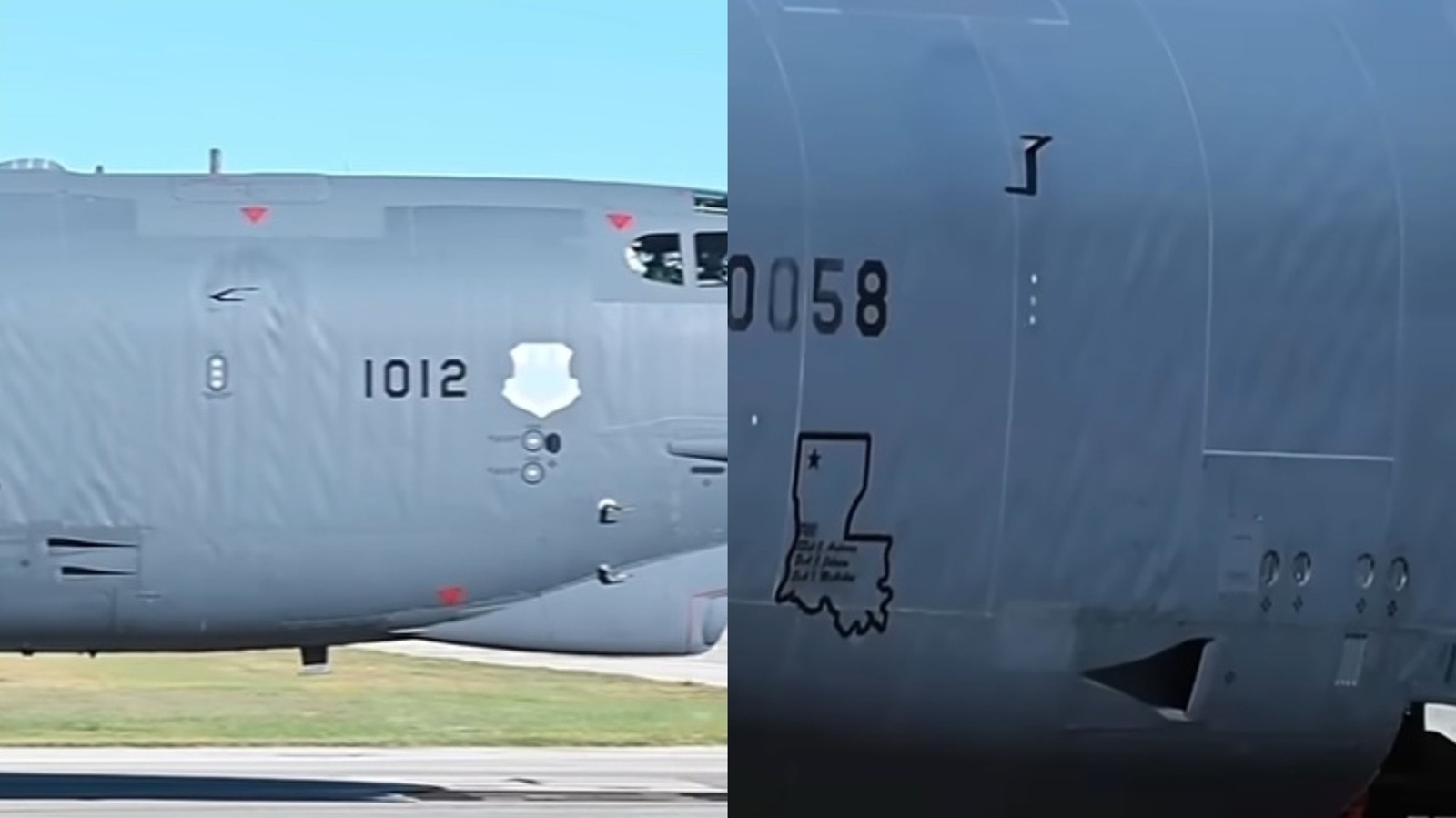Some aircraft are remembered for their unique designs, robust capabilities, and even their influence on pop culture. The B-52 encompasses all of these and is absolutely gargantuan to boot, with a wingspan of 185 feet. Its size may or may not have had a role in the incident where a B-52 almost hit one plane—and actually came close to hitting another.
Nevertheless, when flying normally or taxiing the runway, many onlookers have spotted strange rippling effects across the fuselage of this massive aircraft. Fortunately, this odd wrinkling isn’t a sign that something is wrong with the B-52. On the contrary, it showcases a masterful design.
This big bomber, like all aircraft, is constructed with lightweight aluminum, including the outer panels that comprise its exterior. These ripples can appear in flight as the force of air flowing around the fuselage compresses certain panels, or on the ground as the airframe flexes under load. Because the outer “skin” of the B-52 is very thin, this is a common occurrence—though it’s not always visible unless the sunlight hits it just right.
Despite their thinness, each aluminum panel is engineered to handle load, just like every other airframe component. However, the wrinkles on the B-52 are typically seen near the front of the bomber for a specific reason. The front area between the wings and the cockpit experiences load as the aircraft achieves lift. Being under the center of lift, this area flexes accordingly, causing the rippling effect.
It isn’t just the B-52 that exhibits these wrinkles. Boeing’s 757 has also been observed sporting a similar appearance, though the ripples are usually visible only on a specific section of the plane. Unlike the B-52, the 757 shows ripples along the lower rear of the fuselage, which may be due to this area’s proximity to the tail. This section likely experiences bending forces responsible for the behavior seen on the outer panels.
A fuselage is designed to flex to a certain degree. You might not know this, but commercial airplane walls are only about 4 inches thick and hollow inside. Fortunately, heavy and thick materials aren’t necessary for aircraft strength. The frames, stringers, and skin all work together to provide more than enough structural integrity to handle the stresses of flight.
In older B-52s, you may notice more wrinkles due to an aging airframe, as metal fatigues over time. However, this is nothing to worry about in terms of structural integrity. Increased rippling has little bearing on whether the aircraft is suitable for flight, so long as it’s operated within typical parameters and remains within its service life.
Boeing tests aircraft structural fatigue using hydraulic equipment that simulates the various forces experienced during flight. These tests offer a much better indication of flight worthiness than surface appearance alone.
Considering some of the B-52s still in operation have airframes originally built in the early 1960s, they appear to be holding up quite well. In fact, the U.S. Air Force has extended the B-52’s service life to beyond 2040, which means these airframes could age into their 80s.
Thankfully, these bombers will be updated in several key ways, including the installation of newer Rolls-Royce engines, rewiring, and cutting-edge navigation technology, among other improvements. This ensures the B-52 will remain a vital asset for decades to come.
https://www.jalopnik.com/2004407/why-boeing-b52-bomber-has-skin-wrinkles/



